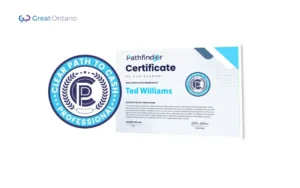Table of Contents
Commercial Vehicle Operator’s Registration (CVOR) is crucial for anyone involved in commercial vehicle operations in Ontario. But when you hear the term “CVOR Abstract,” you might wonder, “What exactly does that mean?” This article breaks down the essentials in simple, accessible language. Think of the CVOR Abstract as a report card for commercial vehicle operators. It records an operator’s safety performance and any violations over time. This document is vital for compliance. It helps keep a safe fleet and ensures accountability.
What is a CVOR Abstract?
The CVOR Abstract is a report. It details a commercial vehicle operator’s safety record in Ontario. The Ministry of Transportation (MTO) generates this report. It has data on collisions, convictions, and inspections for a specific operator.
The Importance of CVOR for Commercial Operators
The CVOR Abstract isn’t just more paperwork. It’s vital for checking the safety of commercial vehicle operators. The government uses it to watch operators’ records. Businesses rely on it to maintain high standards in their fleets.
Types of CVOR Abstracts
There are three main types of CVOR Abstracts:
-
Level I (Summary) CVOR Abstract: Provides a brief overview of the operator’s record.
-
Level II (Detailed) CVOR Abstract: Includes comprehensive details about incidents.
-
Driver CVOR Abstract: Centers on the details of each driver in the fleet.
Each type serves a purpose. It depends on the detail needed by the operator or regulator.
Detailed CVOR Abstract vs. Summary CVOR Abstract
When choosing between a detailed and a summary CVOR Abstract, the main difference is the amount of information. The summary abstract gives a quick snapshot. The detailed abstract offers an in-depth look at each incident, conviction, and inspection.
How to Access a CVOR Abstract
Accessing a CVOR Abstract is straightforward. Operators can request it online or by mail via Ontario’s Ministry of Transportation website. This document is confidential. Only authorized individuals or entities can access it.
Breaking Down the CVOR Abstract
The CVOR Abstract covers many aspects of a commercial operator’s record:
-
Collisions: Details on any accidents involving company vehicles.
-
Convictions: Lists any legal violations that the operator has incurred.
-
Inspections: Reports any safety issues discovered during roadside checks or facility audits.
Each section contributes to an operator’s safety profile.
Understanding CVOR Violations and Points
A point value is assigned to violations, and these points accumulate over time. The system assigns points for issues, from minor infractions to serious safety violations. The more points an operator has, the higher the risk level assigned to them by the MTO.
How CVOR Points Affect Operators
CVOR points can lead to consequences if they exceed certain thresholds. High CVOR points can result in warnings, audits, or even suspension. In severe cases, a high CVOR score can stop a company from operating commercial vehicles.
Improving CVOR Scores: Best Practices
Reducing CVOR points is essential for any commercial vehicle operator. Here are some key strategies:
-
Regular Training: Continuous driver training helps reduce errors.
-
Routine Maintenance: Well-maintained vehicles are less likely to incur inspection violations.
-
Monitoring Driver Behavior: Use GPS and telematics to ensure that drivers follow speed limits and safety rules.
By prioritizing these practices, operators can maintain low CVOR scores and a safer, more efficient fleet.
Common CVOR-Related Mistakes and How to Avoid Them
Many operators make errors without realizing it, and these mistakes can impact their CVOR Abstract. Common mistakes include neglecting vehicle maintenance and overlooking driver infractions. Avoid these pitfalls. Review the CVOR Abstract in detail and address any flagged issues.
Conclusion
CVOR Abstract knowledge is vital for commercial vehicle operators. It helps them run a safe, compliant operation in Ontario. Operators can stay within the law by knowing how it works, the types available, and how to keep a strong record. They can also protect their business and employees on the road.
FAQs About CVOR Abstract
Q. What is the purpose of a CVOR Abstract?
The CVOR Abstract helps commercial vehicle operators. It tracks their safety and ensures compliance with Ontario’s transport laws.
Q. How often should I check my CVOR Abstract?
It’s best to review it at regular intervals, especially following major incidents or once a year. This will ensure that your record is in good standing.
Q. How can I improve my CVOR score?
Train drivers maintain vehicles and watch for compliance with safety rules.
Q. Can a high CVOR score affect my business?
Yes, a high CVOR score can cause audits, fines, or suspensions. This could impact your business.
Q. Is the CVOR Abstract only for Ontario?
Yes, CVOR regulations apply specifically to Ontario. Yet, similar safety-monitoring systems exist in other provinces and territories.








